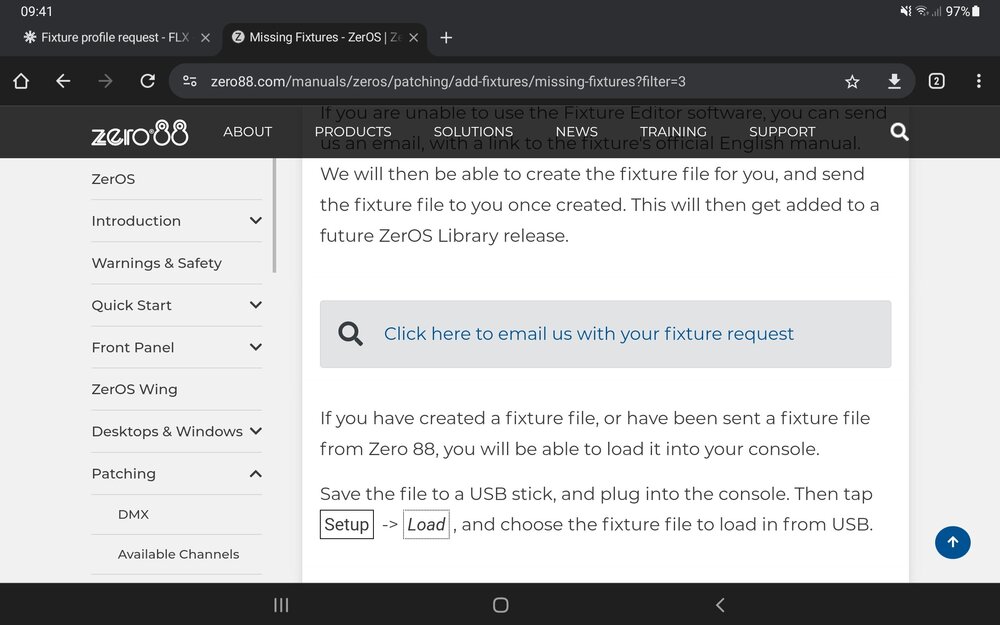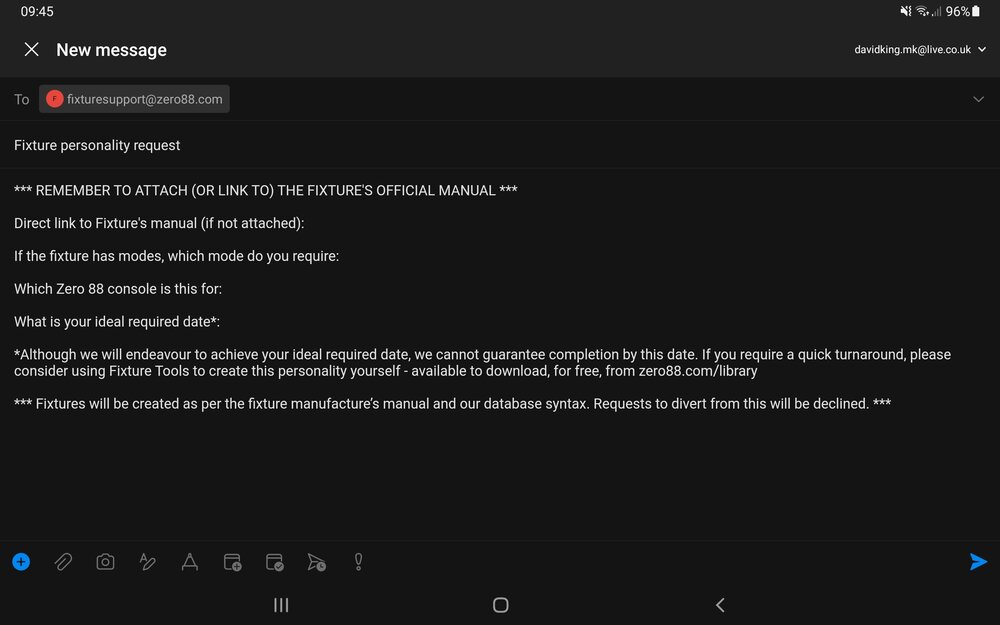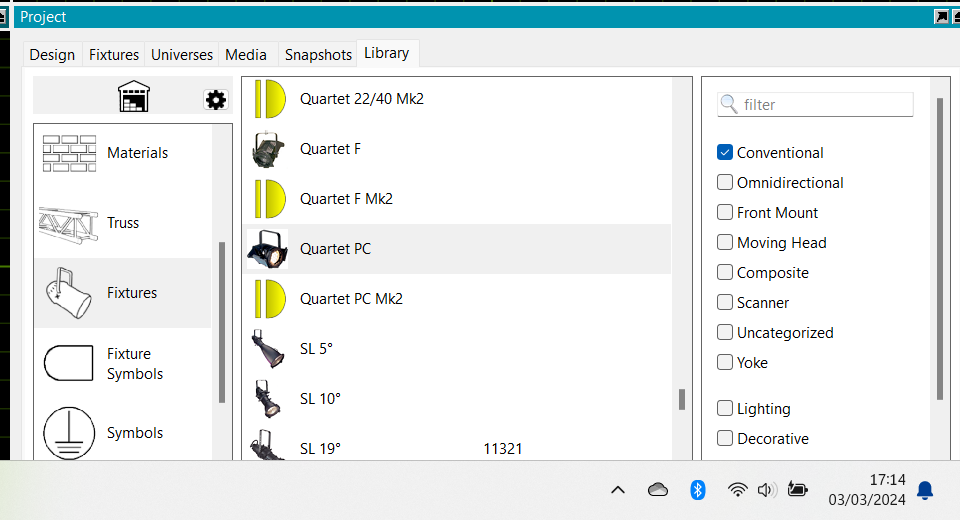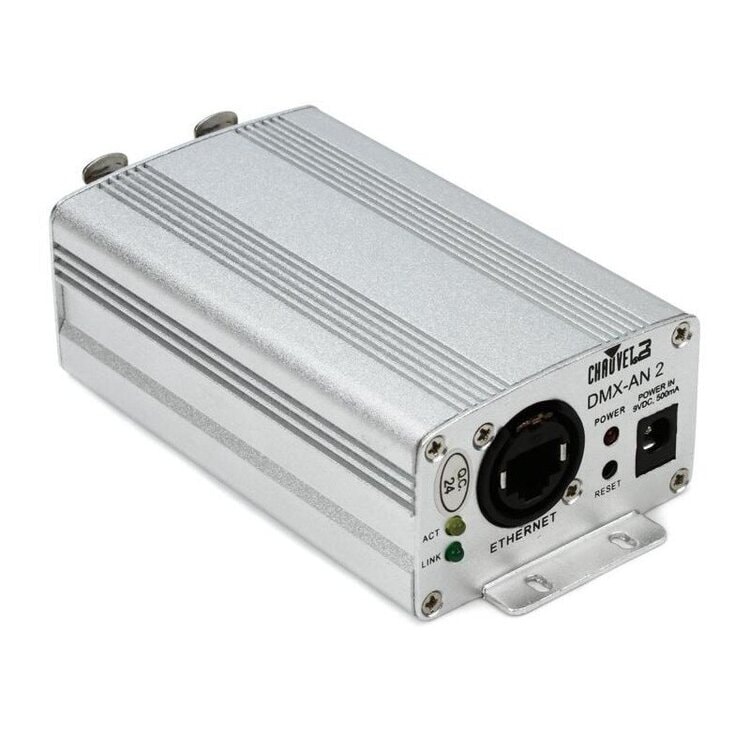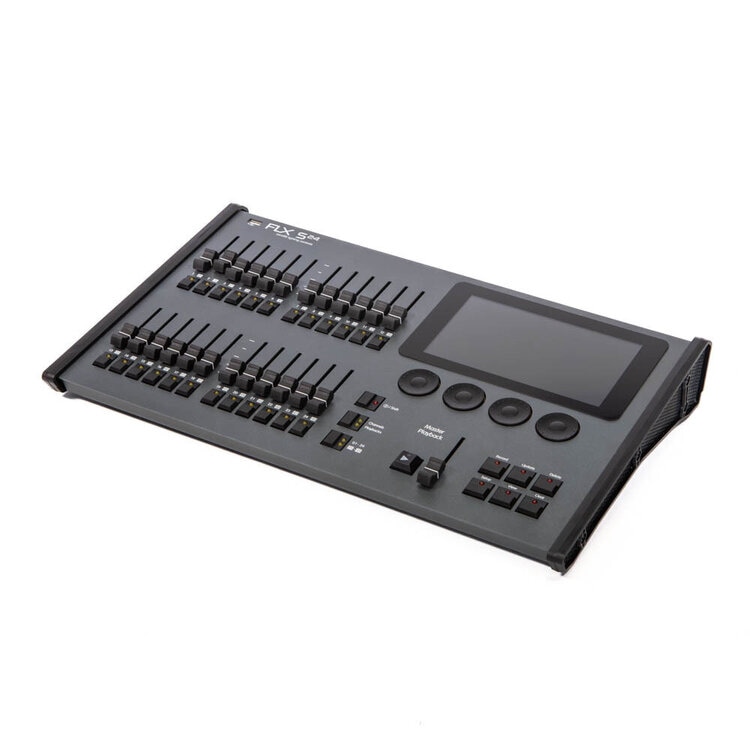
Davidmk
Regulars-
Posts
463 -
Joined
-
Last visited
-
Days Won
43
Everything posted by Davidmk
-
FLX S24 CLEAR LED stubbornly stays lit (7.14)
Davidmk replied to kgallen's topic in FLX S24 & FLX S48
Manual says "hold setup and tap the pallette" to name them. Hopefully that same trick applies to naming other things. Doing a play for an AmDram I was confronted with an S48. I unplugged it and plugged in my FLX so I'm no wiser than you really. Or rather I know less than you since you've already learnt something about Sxx. -
FLX S24 CLEAR LED stubbornly stays lit (7.14)
Davidmk replied to kgallen's topic in FLX S24 & FLX S48
Just a guess but does the clear light stay on while a programmer time fade is going on? (And, is the programmer time set at 10s?) -
ZerOS 7.14.3 Released and ZerOS 7.15 Coming Soon!
Davidmk replied to Jon Hole's topic in News & Announcements
I was at PLASA on Monday. I went hoping there'd be a Z88 announcement to discuss (a replacement for the FLX for example). Previously I'd have stopped for a chat anyway but, although VariLite weren't busy, I didn't have time after waiting to talk to Chamsys, Infinity, Vista and Lightshark about their offerings in my price bracket. Did linger over the Sirius in the "archaeology" display though. 😊 -
I'm a limited ArtNet/sACN user but, as this has partly become a Thomann discussion here's my take on it. I concur with what's been said about Thomann and some of their own-brand products. Not as pleased with Stairville as I am with Varytec for example. The only drawback with ordering from Germany is that orders can vanish into UK customs for an indeterminate time and, with Thomann, you don't get proper tracking until they come out. Customs checks are a product of Brexit of course but place your order well before you need the gear as it might take longer than expected. As to this particular product, I suggest you read the reviews and consider whether you might want sACN now or in the future. (I actually use these which are dead easy to set up but, sadly, they appear to have been discontinued. Don't think they supported RDM anyway. I've got one of these as well. Only 2 universe, not RDM but just as easy to use as the 4 universe node. Might still be available although not from Thomann)
-
A quick Google for "midi to osc converter" shows a lot of people have had the same issue in various situations and some of the hits cover solutions that are on offer. These include free options. I haven't time to review any of the options and, even if I did you should still carry out your own research but I am intrigued by the first result I got. ShowCockpit, it costs between €30 and .€299 depending on on the options you want and seems to be well documented. This is not a reccomendation but it interested me enough that I may give it a try myself even though I already use a TouchOSC thing I wrote which includes midi input and OSC output. In 24 years I've had one touring show come in that wanted midi control of the desk and it might be handy to have a solution on standby in case it happens again. Looking at free options I found MidiMonster interesting. It is open source and appears to be free. It's a bit more complicated to set up but not too bad and there is documentation although it seems a bit sketchy. Again, you should do your own research - there could be better options. When you get a solution that works you should give the forum a heads up as there may be others that need it.
-
You can do it with TouchOSC (the new, paid version not the mk1, free one) but it would require some coding.
-
If this means exactly match then that might be the problem. The first 3 numbers of the laptop's address should match, the last should be between 0 (or is it 1) and 255 but different to any of the addresses used by the desk. Note that the desk should have a number of addresses, at least one for the desk itself then, if you are using them, one each for ArtNet/sACN, CITP, remote apps, tracking backup and OSC,
-
This might be helpful as well... https://www.zero88.com/manuals/zeros/patching/add-fixtures/edit-export
-
That's odd because it takes me to this page of the manual. Near the bottom of that page there's a link (see 1st attachment) and that opens a new mail in my maill app (outlook - see 2nd attachment). This is on Android.
-
I think you'll find cue 1 has always had a zero time but you've never noticed it. The manual says... Cue 1, will always have a 0 second fade up and fade down time for intensity. This is to ensure that the intensity follows the level of the playback fader. Check here for more information. (Incidentally, when @Edward Z88 checks the forum he'll likely move your post to the FLX S thread.)
-
I think it's selecting the fixture button that spoils it so it should be... press record then the ‘home’ symbol and select default No doubt @Edward Z88 will be along in the morning to confirm or correct this.
-
ZerOS 7.14.3 Released and ZerOS 7.15 Coming Soon!
Davidmk replied to Jon Hole's topic in News & Announcements
ZerOS 7.15 mettra à niveau toutes les consoles FLX S24 et FLX S48 vers 2048 canaux (quatre univers) et 96 et 192 appareils respectivement gratuitement. Les lectures, groupes et palettes disponibles seront également doublés. -
@kgallen has said it all really. You will be missed by the user community and, I'm sure, by your colleagues. Wishing you the best in your future endeavours. Every confidence in @Edward Z88 and @Jon Hole but this is still a pity.
-
@kgallen It's HTP that's the issue. As you say an inhibit taken to zero would take them out but you have to take it down to do it and I don't think the macro could replicate taking a fader to zero, besides you'd need it to go back up again on releasing the UDK. Am I right in thinking that PB settings include intensity as LTP? If so, would a PB with those fixtures at zero with LTP intensity and release on lower do the trick? (Not an inhibit or they'll never come on). Leave the fader alone and use the flash button. Not sure this would work either and don't have time to try it out or check the manual.
-
Well, I've just downloaded and installed the latest update to Capture 2023 (for which I am licensed) and the Quartet PC is there... But, if you are using the student edition then I expect you have read the limitations - if not then they say... Capture 2023 Student Edition The Student Edition of Capture is a free version of Capture that may be used for any purpose, educational or not. Feature-wise it is based on the Solo Edition, with the following differences: Unlimited number of DMX universes. Reduced amount of trusses and fixtures in the library. The full list of fixtures is available here. Motion (DMX movers, DMX rotators and motion constructs) and effects (CO2, fire and water jets) are not available. Opens and saves Student Edition project files only. Does not export Capture Presentation files. All console connectivity options except MA-Net3 are present and fully functional. and will have checked out the link to available fixtures which, sadly, does not include your specific models. Are you a student at an establishment which has an education licence for Capture? If so then speak to your tutor as they may be able to help. If no then, for the purposes of trying out effects and seeing roughly how your programming will look then you will need to use the closest available fixtures from the reduced set available in the student edition. Free editions of software will always have some limitations - nobody would pay for a licence if they didn't - and Capture student appears to have what you need to set students a design task and for them to complete the assignment.
-
I can't check this because I have a Capture licence but I don't think you can do much without a licence except load the dockhouse file and use it as it stands. Obviously you need to load the dockhouse show file into your desk or phantom ZerOS as well.
-
Wild guess... The chauvets have a colour temp channel, the ads don't.
-
I'd be very surprised if it was a desk fault if it is patched correctly. Check the desk has the same DMX address and mode as the fixture (and the Strand desk if you want to be thorough). Check against the actual fixture, do not assume that it is the same as others of the same type. If it isn't that then I suspect it will be hard to find, here are some things you can try which may give you more information even if they don't fix it. In no particular order... You should probably check that none of the pins in the XLR plug at the desk are connected to the shell. Correct the wiring if they are. If you have other fixtures of the same type, try setting one of them to the same address as the errant fixture. Also try setting the errant fixture to the same address as a working one of the same type. Disconnect the DMX out of the problem fixture. Then try a terminator in it's place. With each fixture before the problem one in the DMX cable run, remove the DMX in and out and connect them together. If you have enough DMX cable (or can de-rig the fixture) try connecting it directly to the desk. If you have (or can borrow) a DMX tester with a flicker finder use that at the back of the desk and in the place of the fixture. Try changing the DMX transmission from continuous to Delta (or Delta to continuous) - see manual here Have a look at the desk output for the fixture (see manual here). Check what it is telling the fixture by looking in the fixture's manual. If all of that fails to give you a clue then obtain a manual to the dark arts of wizardry or wait for advice from others on the forum.
-
You patch them on the desk in the same way you would if it was a wired connection although you won't be able to use RDM unless the lumenradio handles it. See the manual here for details on patching.
-
The link provided by @Edward Z88 is the right one. The link I supplied gets you the latest library and the fixture editor but, unless I've missed it, not the contact for getting new fixtures. Edward's takes you to the online manual and a link in that opens an email for requesting a new fixture. @Edward Z88: Am I mistaken in thinking the forum topic used to go direct to fixture requests? (Or does it still but I failed to find it?)
-
Requests for new fixtures should be made in this topic Fixture Support & profile requests. You need to include details of the fixture - ideally a link to or scan of the manual. Daresay @Edward Z88 will see this and pick it up but I suspect the proper route is quicker.
-
Thanks Ian, for this and your email. Fast 7 knowledgeable as always.
-
I was putting my desk away this evening when I noticed a rattle inside. Took the cover off (very careful about the cables between the halves) and discovered a screw had come out. Retrieved the screw, found where it should have been (on the back of the screen assembly) and replaced it. Put the covers back on. Ran the self test (all good on faders and buttons). Noticed the Other Test tab, thought I'd take a look and spotted the Do NVR Test. Tried that and got Load Pattern Buffer failed. Restarted the desk normally. On version 7.14 Start up text included... Preparing NVR Shadow Buffer ... Initialising data NVR retention check Ok Desk seems to be working OK and I get sensible looking DMX output without framing errors or flicker. Should I be worried about the NVR thing?
-
Certainly that is possible and there are several ways to do it (see manual here). However nothing is possible if you don't have information about the fixtures including their addresses, mode (& number of channels) and the channel usage. Having the correct manual usually provides everything you need. Patching is only the first step though, you may need to integrate them into your saved show - nothing will happen automatically.
-
This has been implemented in recent versions. See manual here.


